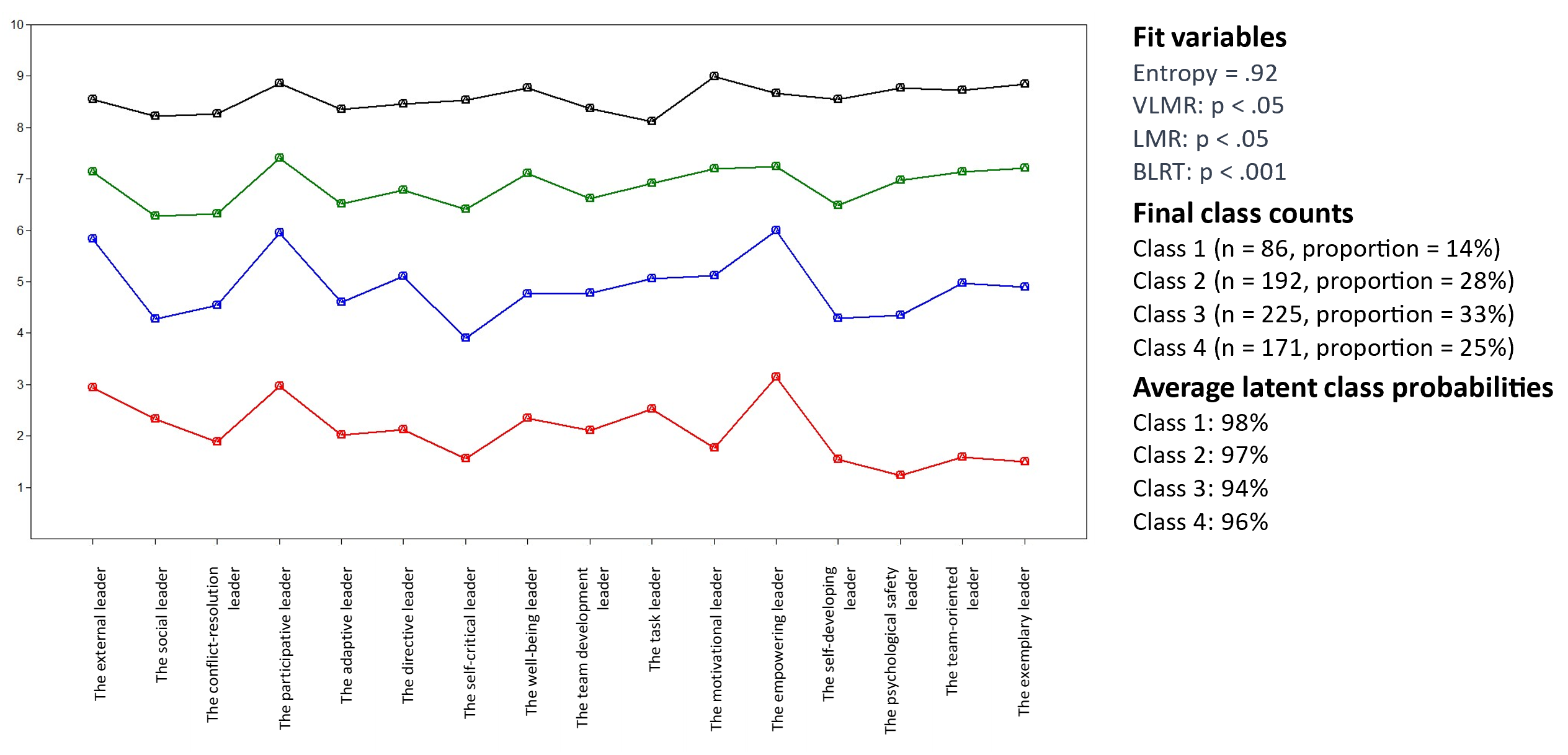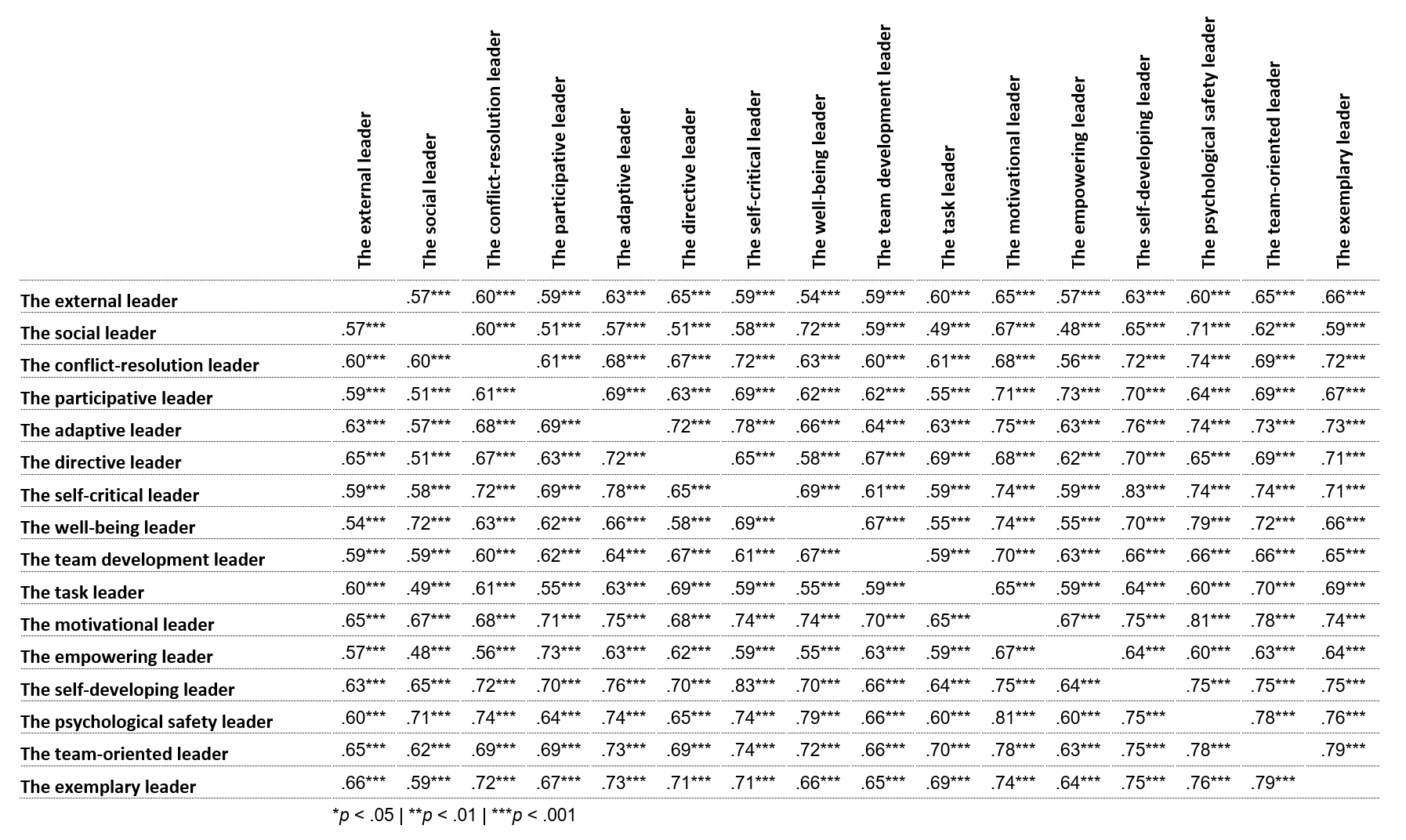Relevance of formal leadership roles
The subsequent graphs depict the questionnaire responses, offering visual representations of the frequency of participants indicating that a leadership role was not relevant, relevant but not fulfilled by the formal leader, or relevant and fulfilled. The initial bar graph presents the overall results, while the subsequent four bar graphs represent the outcomes for each specific type of team, namely board teams, POC-teams, research teams, and ATP-teams.
The external leader
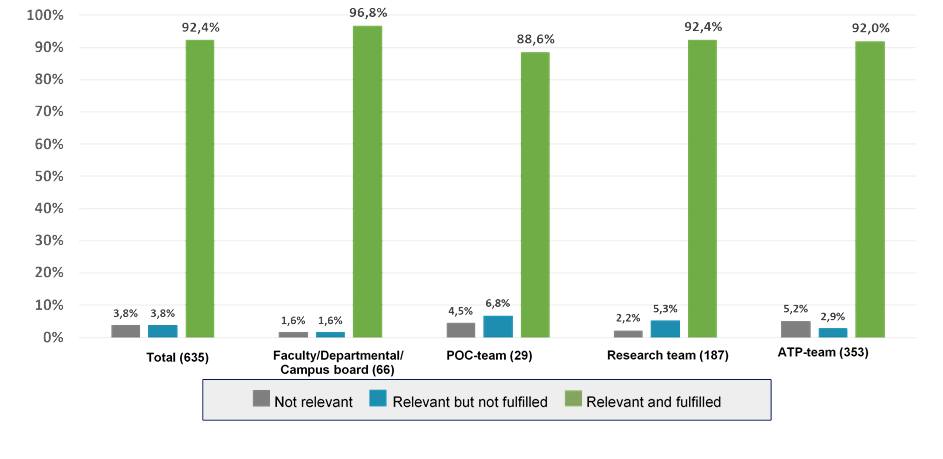
The social leader
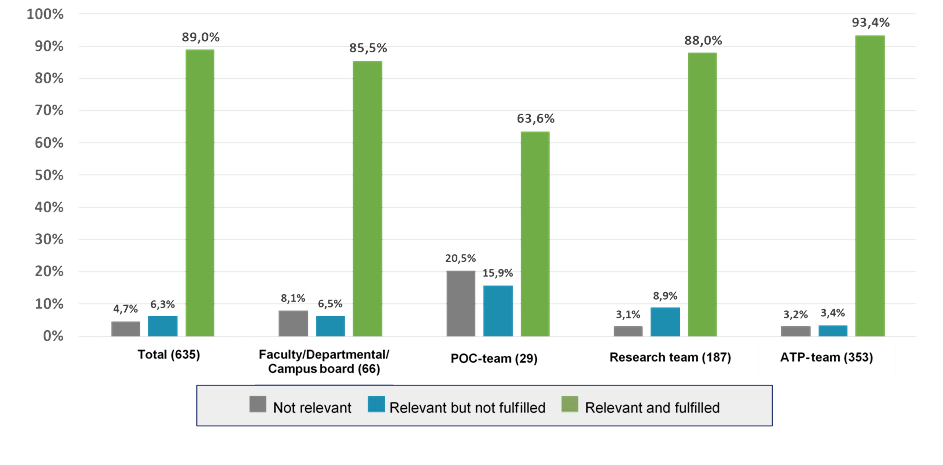
The conflict-resolution leader
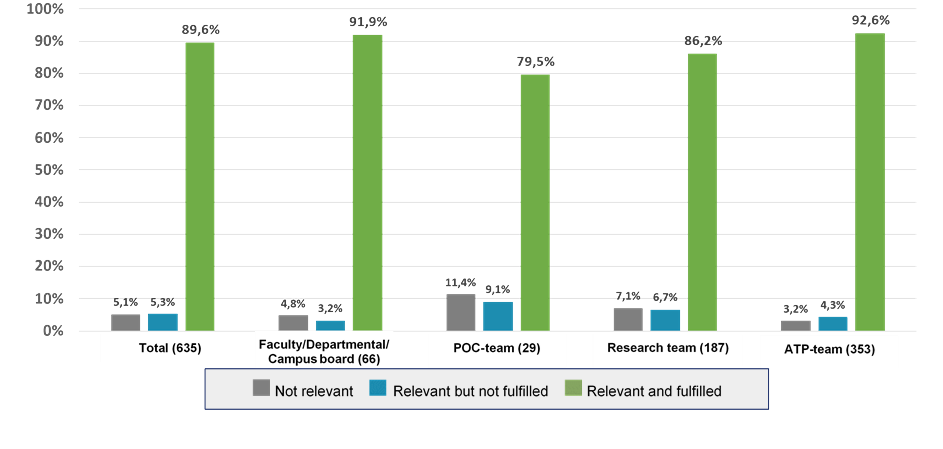
The participative leader
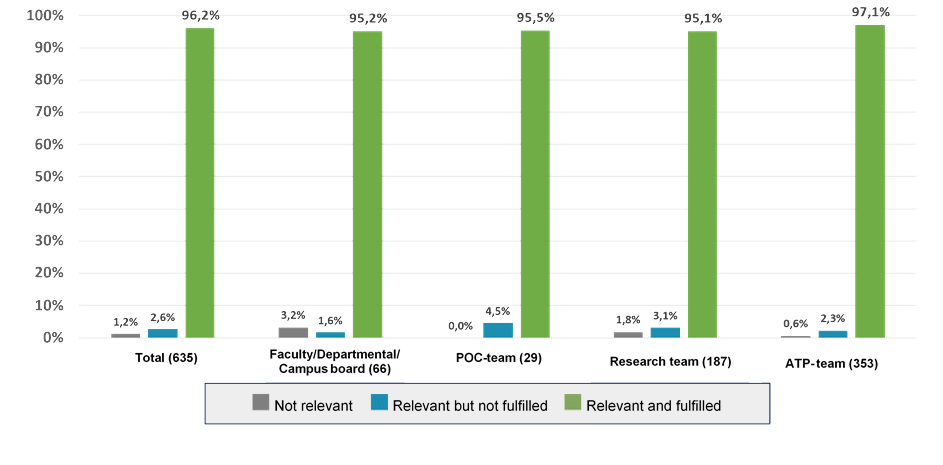
The adaptive leader
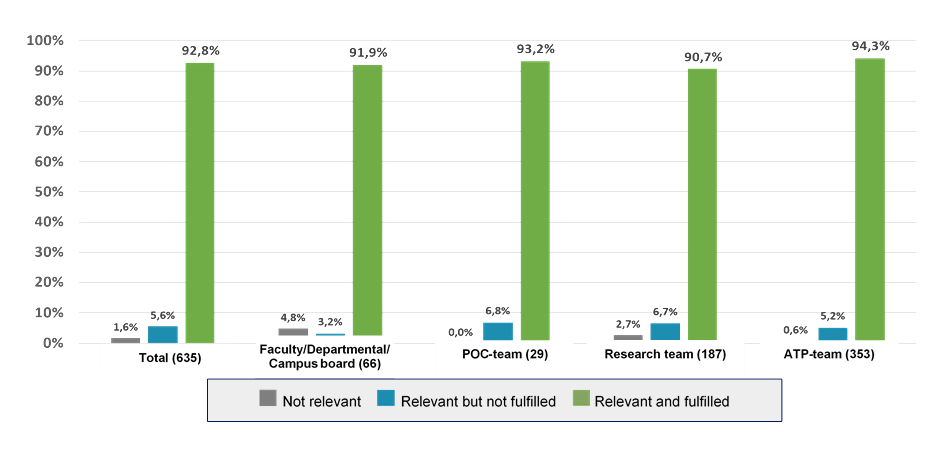
The directive leader
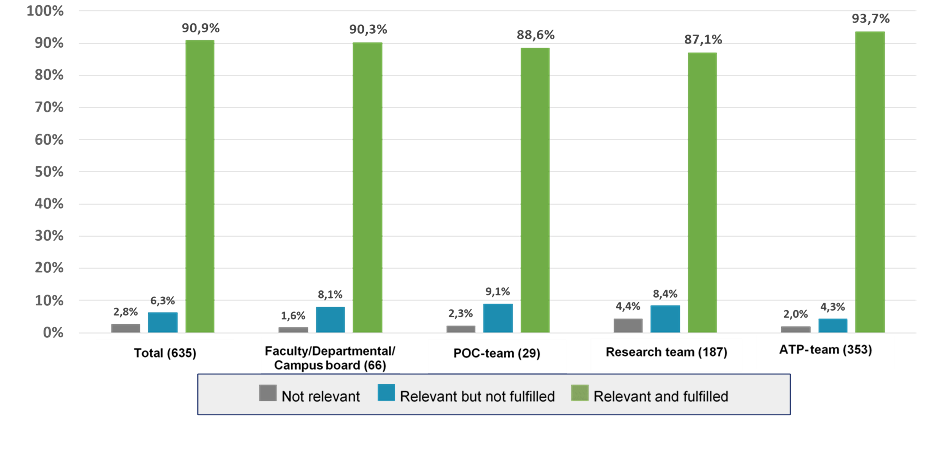
The self-critical leader
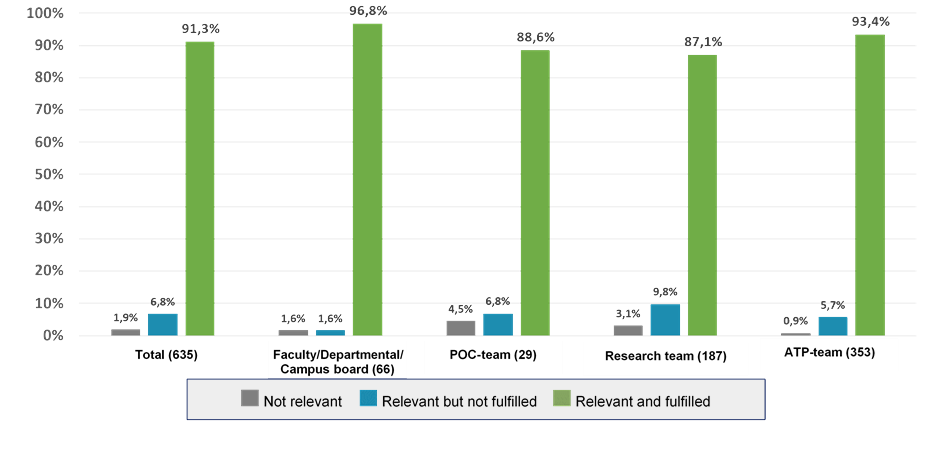
The well-being leader
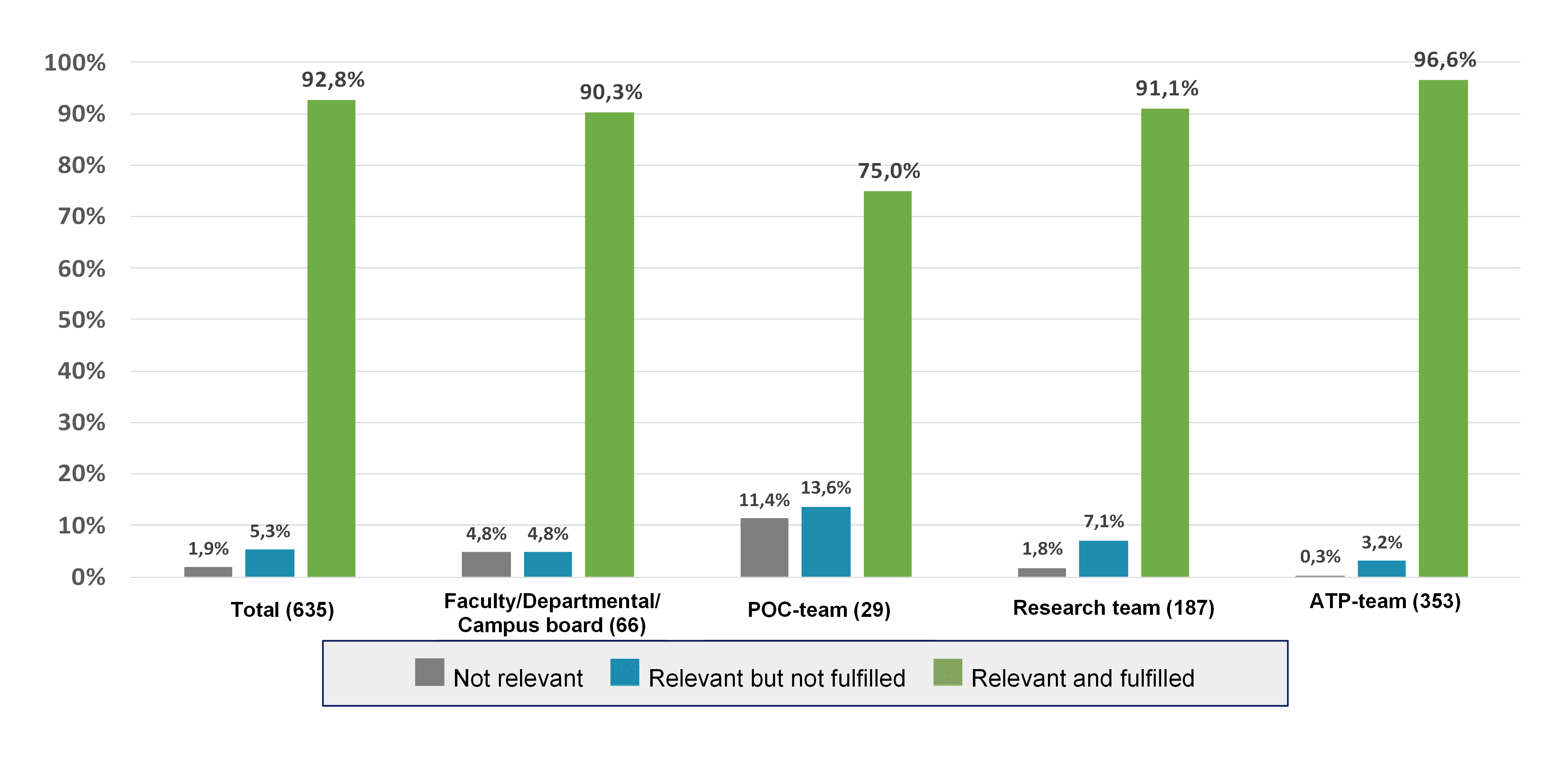
The team development leader
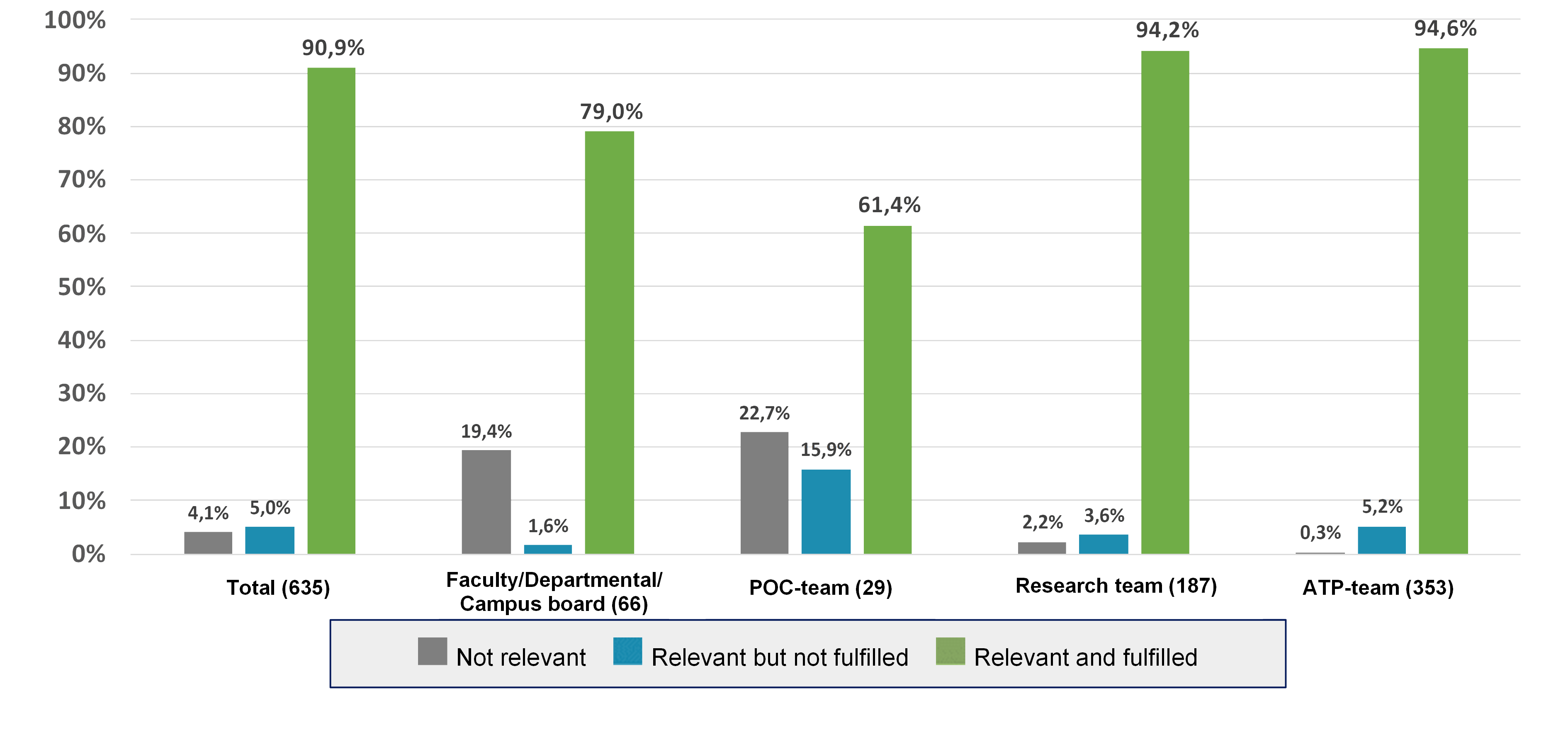
The task leader
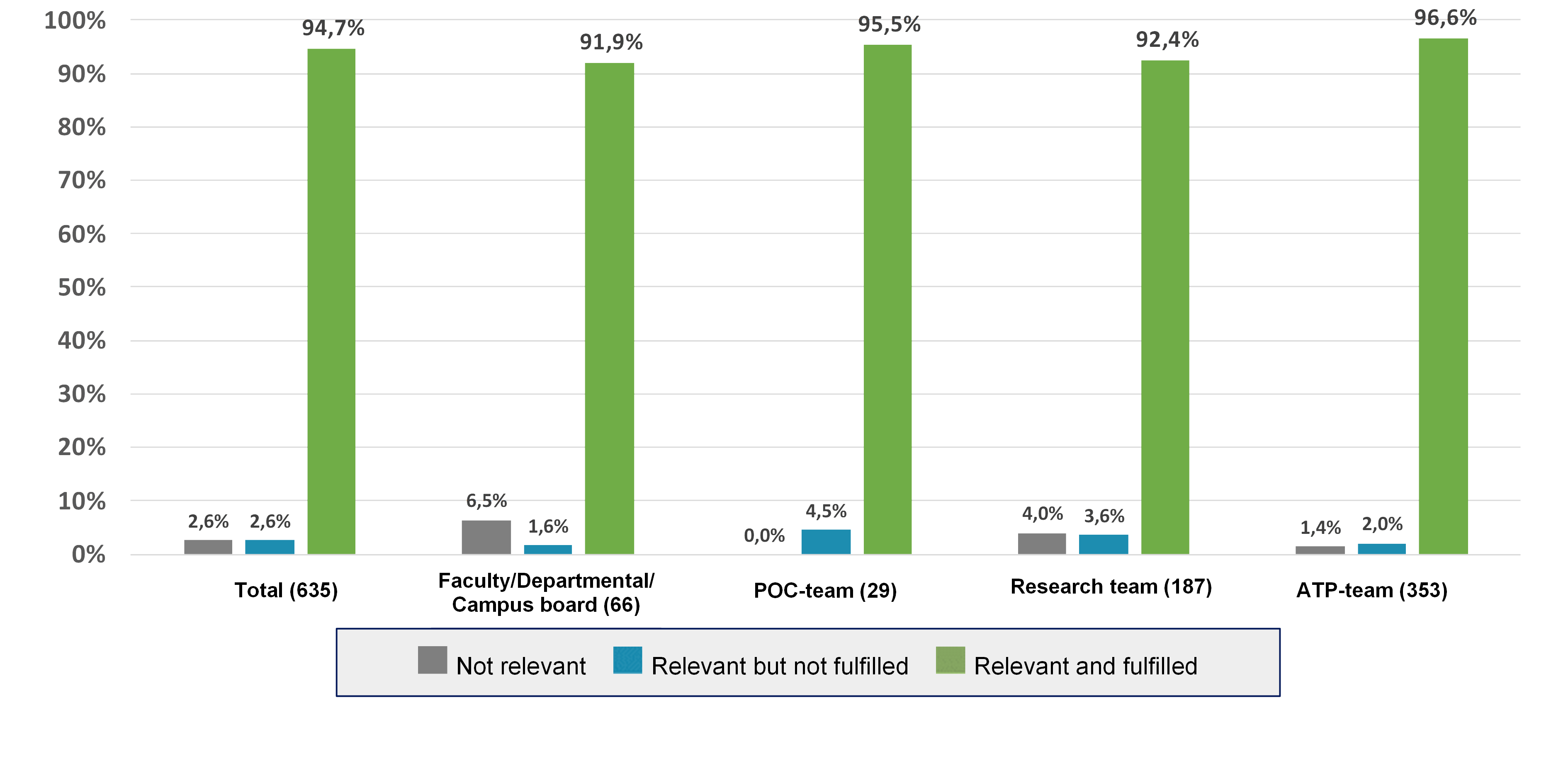
The motivational leader
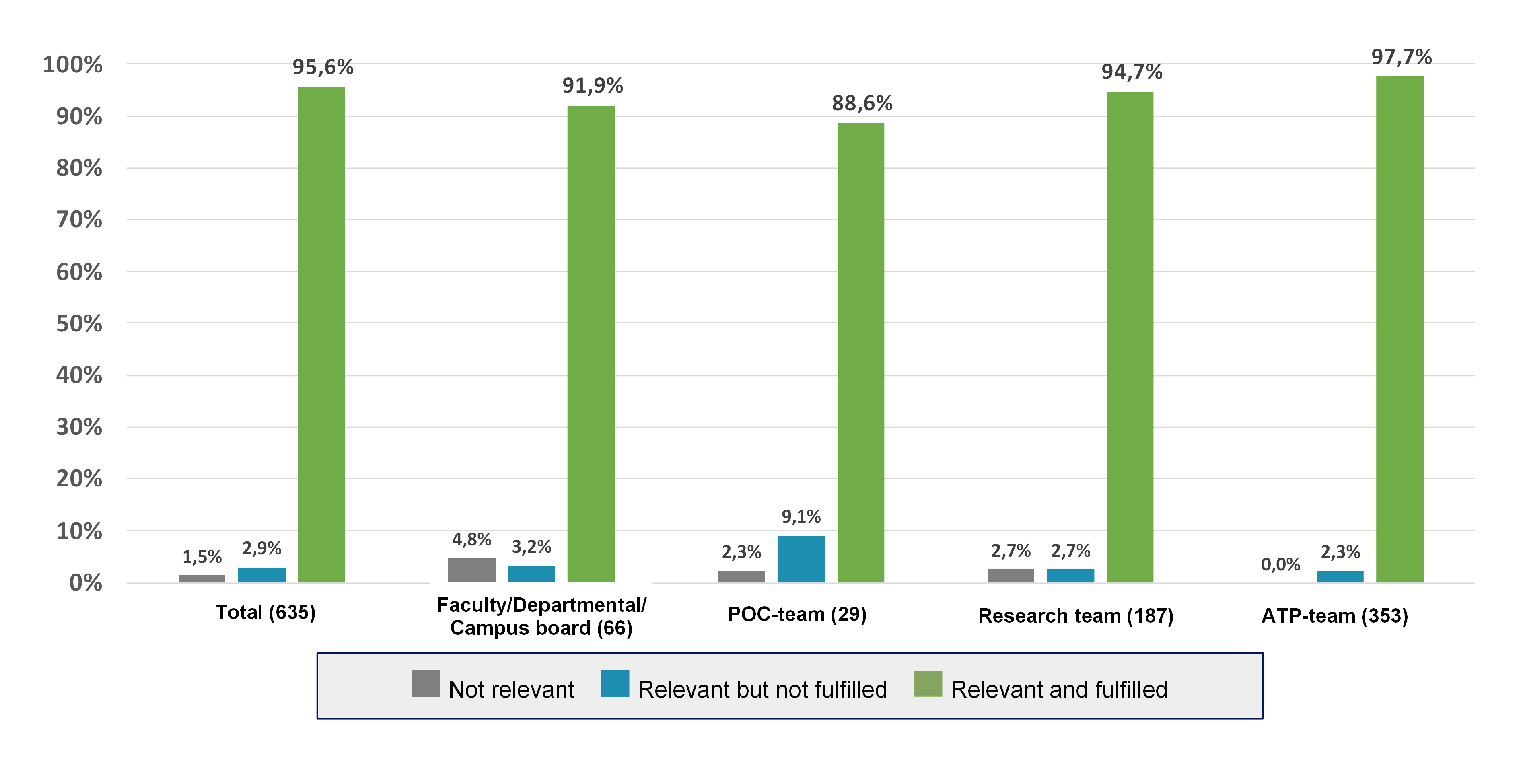
The empowering leader
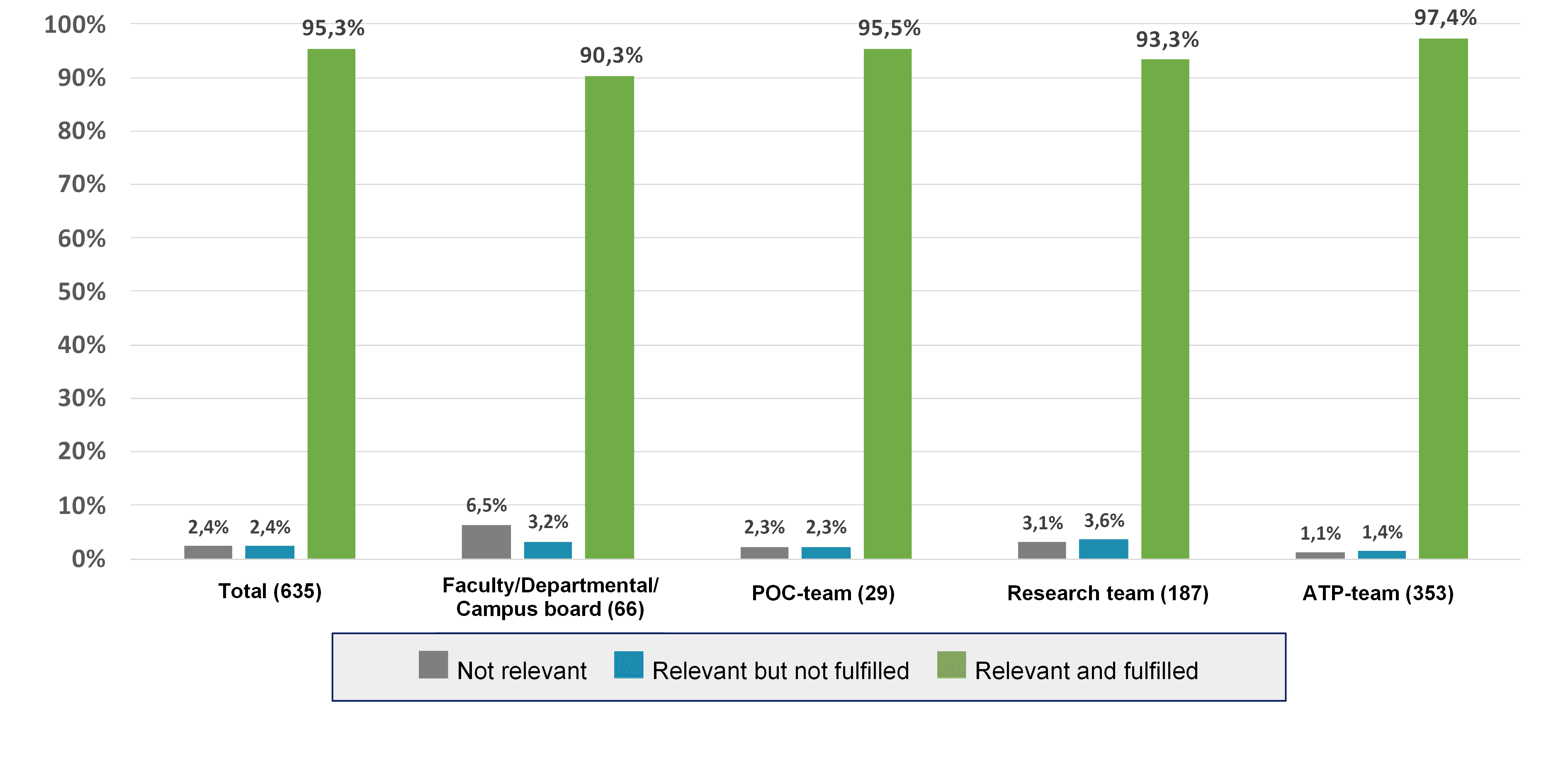
The self-developing leader
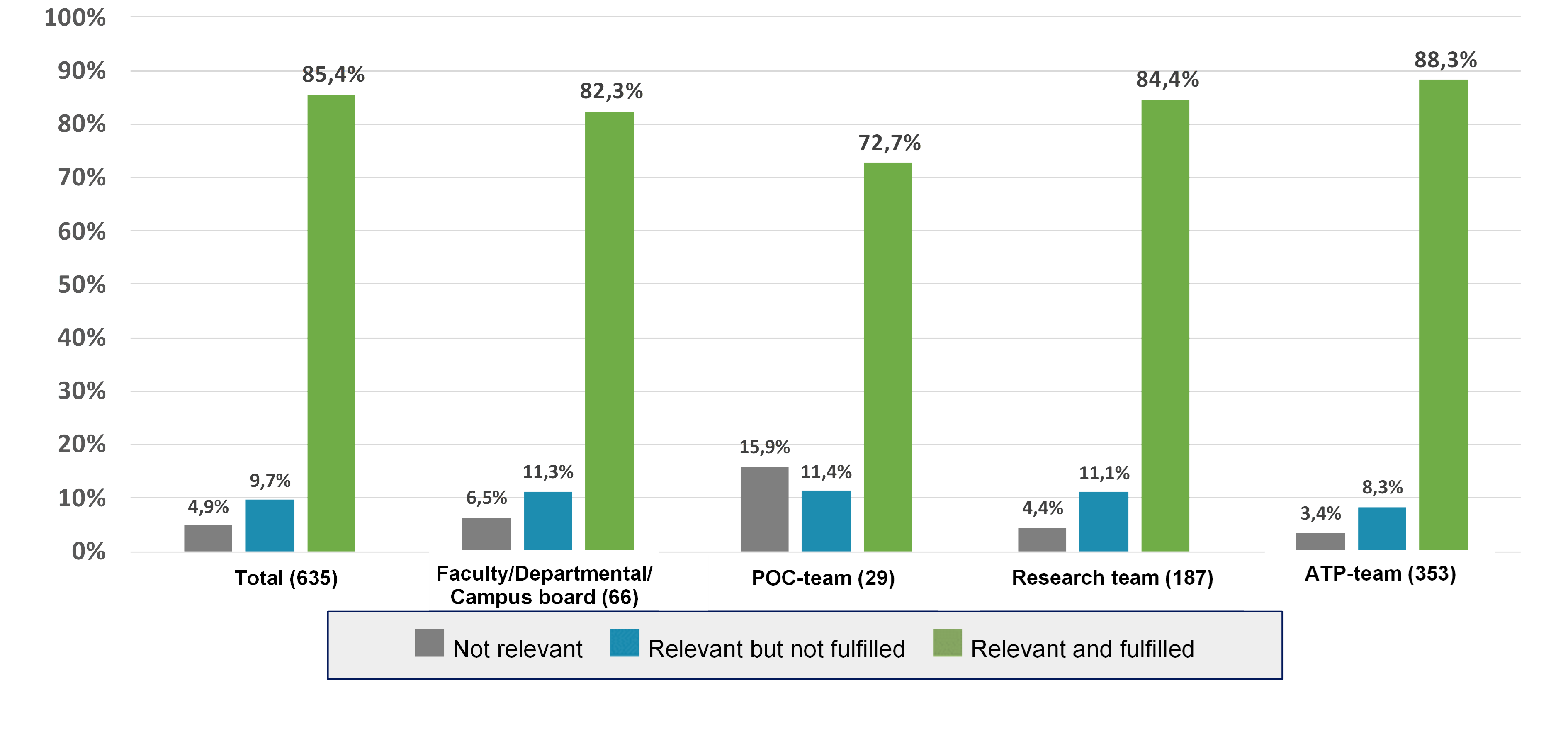
The psychological safety leader
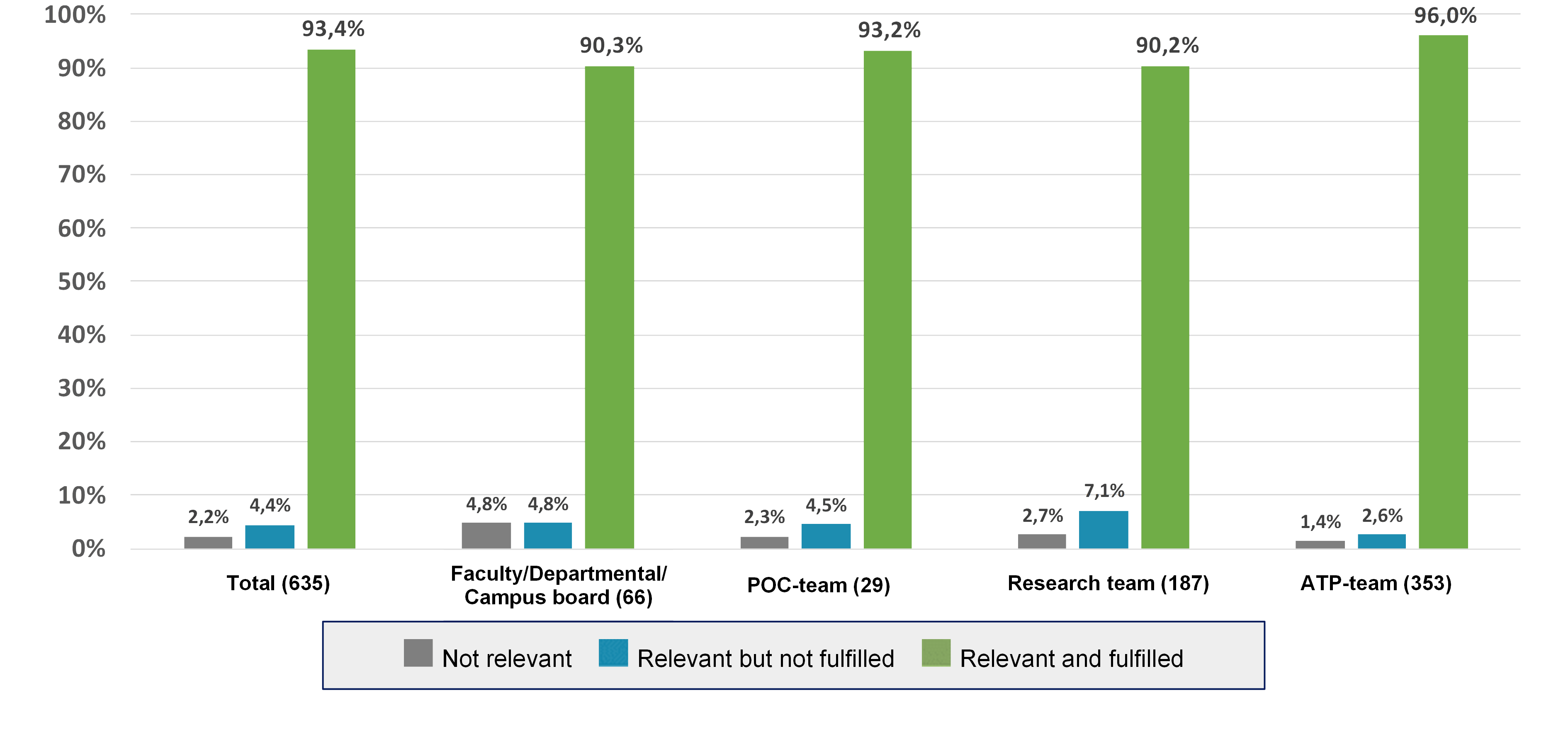
The team-oriented leader

The exemplary leader
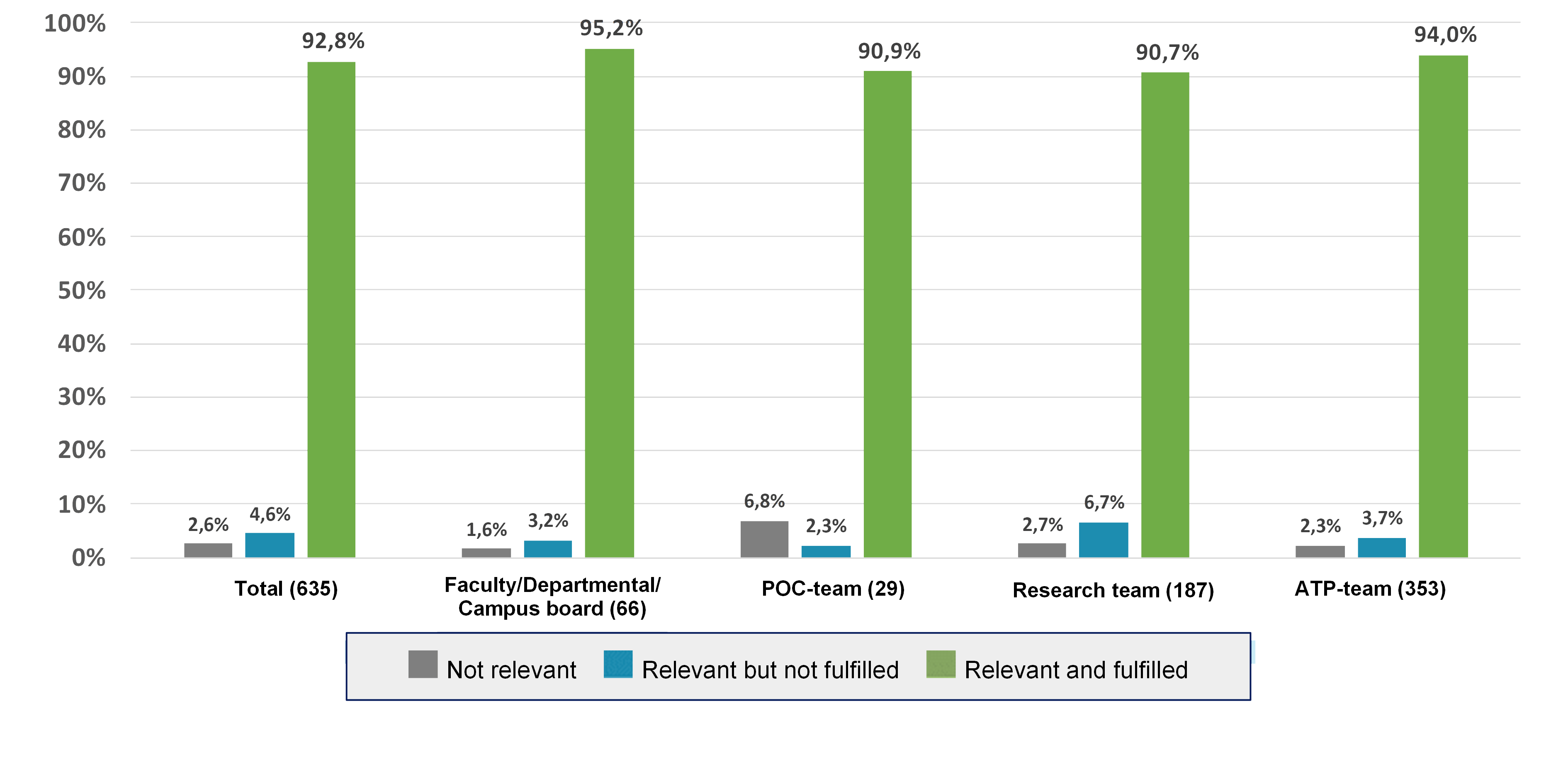
Perceived quality of formal leadership roles
The subsequent graphs illustrate the average perceived quality of formal leadership roles. Error bars are incorporated to represent the standard deviations. These averages ranged from 5.8 to 6.9, measured on a scale from 0 to 10.
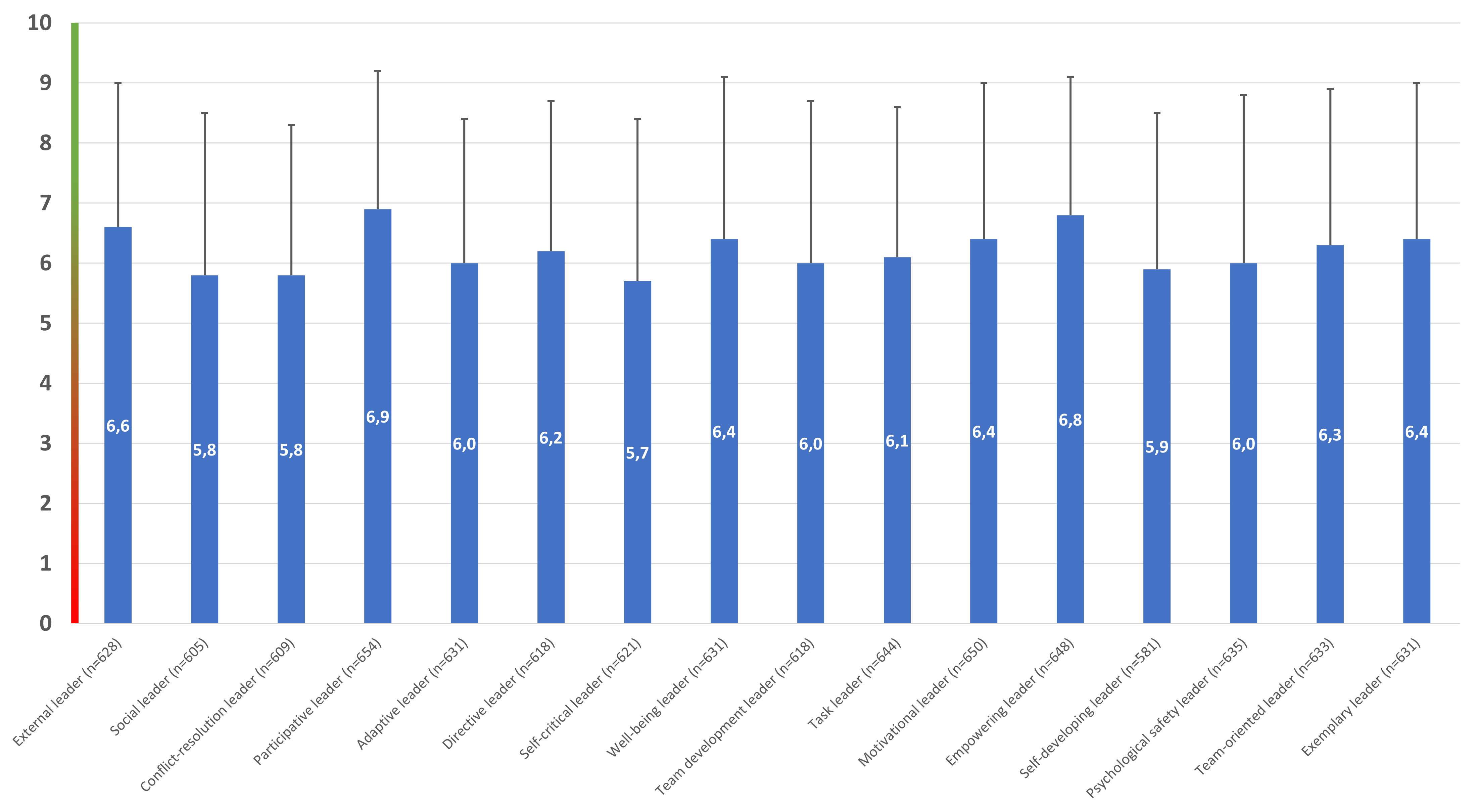
The following graphs depict the average perceived quality of formal leadership roles for board teams, POC-teams, research teams, and ATP-teams. Error bars are incorporated to represent the standard deviations.
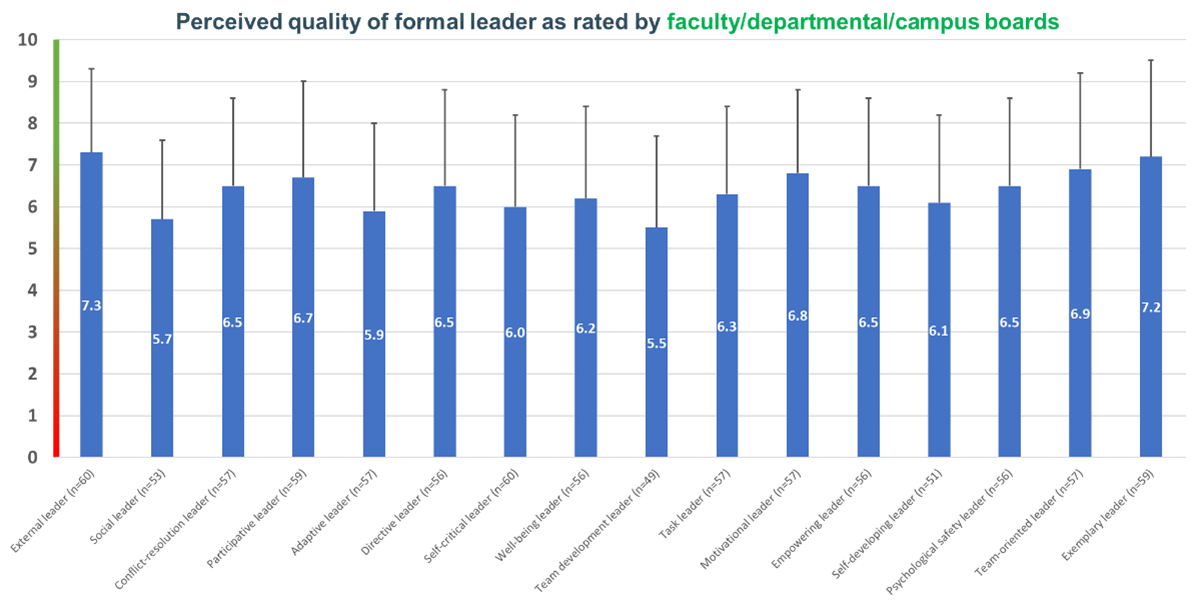
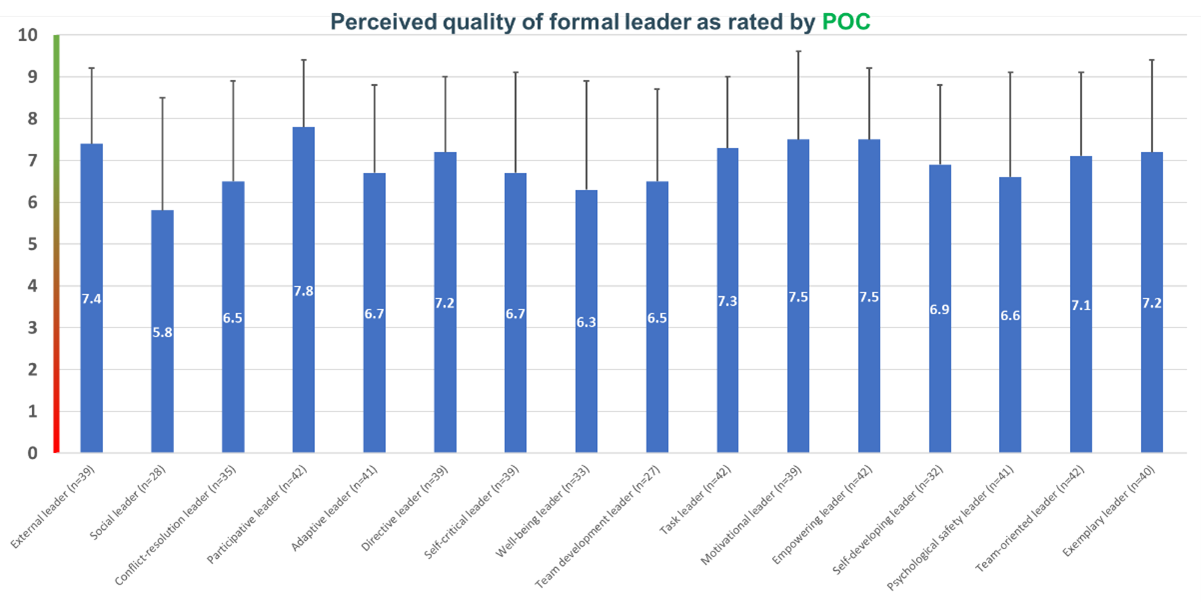

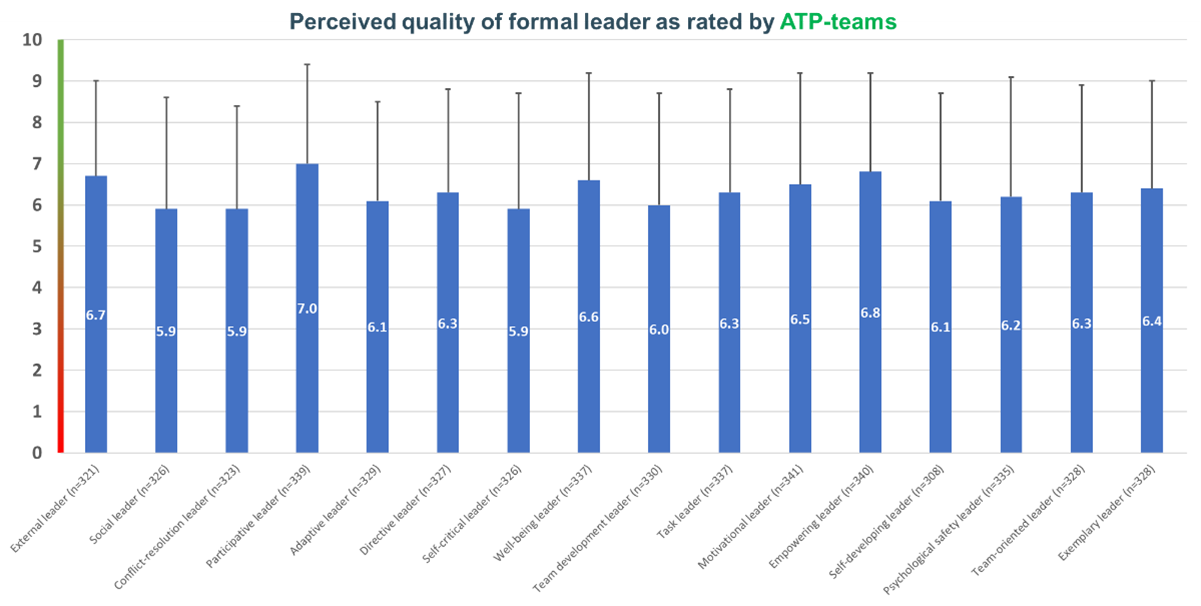
Latent profile analysis
Next, we performed latent profile analyses using M-plus, in order to identify underlying latent profiles or distinct patterns of leadership behaviour. By conducting latent profile analyses, we aimed to identify potential distinct combinations or configurations of leadership roles that tend to co-occur together.
In our analysis of formal leadership roles, the latent profile analyses revealed that formal leadership roles tend to co-occur together and were occupied either all with high quality (black line), all with medium quality (green and blue line), or all with low quality (red line). In other words, when a few formal leadership roles were fulfilled with high quality in our sample, it is likely that the other leadership roles were also perceived as being fulfilled with high quality. Overall, we could not identify any other unique leadership combinations (e.g., teams with high task-related leadership roles and low social-related leadership roles).
